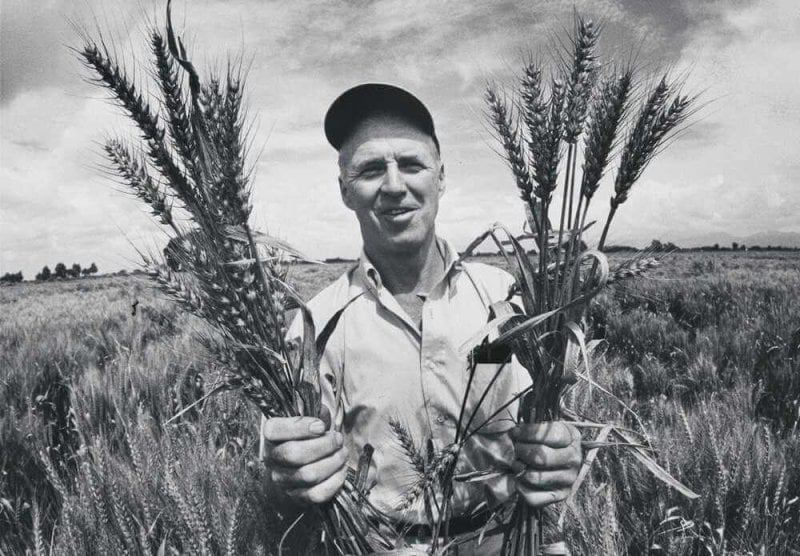‘An increase in food production does not necessarily result in less hunger’: Why we need a second Green Revolution embracing genetics and organic farming
‘An increase in food production does not necessarily result in less hunger’: Why we need a second Green Revolution embracing genetics and organic farming


Most people believe hunger is caused by food scarcity, however this is wrong. There is currently more than enough food available to feed our global population of 7.9 billion, yet over 800 million still go hungry. How can this be?
According to the UN Food and Agriculture Organization (FAO), the world farms, grazes or fishes more than 1.5 times enough food to feed a planet populated by 10 billion people, which is the number the UN projects will inhabit the Earth by 2050.
But people making less than $2 a day — most of whom are resource-poor farmers cultivating un-viably small plots of land — cannot afford to buy this food, states an article in the “Journal of Sustainable Agriculture’.
In other words, hunger is caused by poverty, not scarcity. More on that below. For now we should point out, only recently has hunger started rising again, after declining for a whole decade.
The second half of the 20th century saw the biggest population increase in human history. Since 1950, the world’s population has gone from 2.5 billion people to 7.7 billion. According to the United Nations, the population is expected to reach 9.7 billion by 2050, with two-thirds of the growth over the next 30 years forecast to take place in Africa.
In a 2013 article, National Geographic poses the question: “Science prevented the last food crisis. Can it save us again?” The long-running natural sciences publication believes another green revolution is possible by continuing Borlaug’s work of breeding better crops but with modern genetic techniques; and that the negatives of commercial farming can be partially offset through organic food production.
To the first point, scientists can now identify and manipulate a large variety of plant genes for traits like disease resistance and drought tolerance, making farming more productive and crops more resilient.
…
[Ultimately,] an increase in food production does not necessarily result in less hunger — if the poor don’t have the money to buy food, increased production is not going to help them.This is an excerpt. Read the original post here.

 | Videos | More... |

Video: Nuclear energy will destroy us? Global warming is an existential threat? Chemicals are massacring bees? Donate to the Green Industrial Complex!
 | Bees & Pollinators | More... |

GLP podcast: Science journalism is a mess. Here’s how to fix it

Mosquito massacre: Can we safely tackle malaria with a CRISPR gene drive?

Are we facing an ‘Insect Apocalypse’ caused by ‘intensive, industrial’ farming and agricultural chemicals? The media say yes; Science says ‘no’
 | Infographics | More... |

Infographic: Global regulatory and health research agencies on whether glyphosate causes cancer
 | GMO FAQs | More... |

Why is there controversy over GMO foods but not GMO drugs?

How are GMOs labeled around the world?

How does genetic engineering differ from conventional breeding?
 | GLP Profiles | More... |

Alex Jones: Right-wing conspiracy theorist stokes fear of GMOs, pesticides to sell ‘health supplements’




 Viewpoint — Fact checking MAHA mythmakers: How wellness influencers and RFK, Jr. undermine American science and health
Viewpoint — Fact checking MAHA mythmakers: How wellness influencers and RFK, Jr. undermine American science and health Viewpoint: Video — Big Solar is gobbling up productive agricultural land and hurting farmers yet providing little energy or sustainabilty gains
Viewpoint: Video — Big Solar is gobbling up productive agricultural land and hurting farmers yet providing little energy or sustainabilty gains Trust issues: What happens when therapists use ChatGPT?
Trust issues: What happens when therapists use ChatGPT? Fighting deforestation with CO2: Biotechnology breakthrough creates sustainable palm oil alternative for cosmetics
Fighting deforestation with CO2: Biotechnology breakthrough creates sustainable palm oil alternative for cosmetics California, Washington, Oregon forge immunization alliance to safeguard vaccine access against federal undermining
California, Washington, Oregon forge immunization alliance to safeguard vaccine access against federal undermining 30-year-old tomato line shows genetic resistance to devastating virus
30-year-old tomato line shows genetic resistance to devastating virus The free-range chicken dilemma: Better for birds, but with substantial costs
The free-range chicken dilemma: Better for birds, but with substantial costs ‘You have to treat the brain first’: Rethinking chronic pain with Sanjay Gupta
‘You have to treat the brain first’: Rethinking chronic pain with Sanjay Gupta
